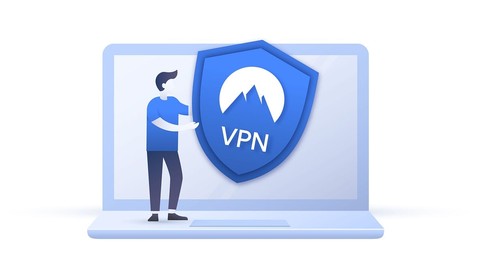
pfSense Firewall - Mastering in OpenVPN Site-to-Site VPN
Posted on 22 Jun 07:05 | by BaDshaH | 1 views

Published 6/2024
Created by Nadeem Muhammad Ali
MP4 | Video: h264, 1280x720 | Audio: AAC, 44.1 KHz, 2 Ch
Genre: eLearning | Language: English | Duration: 10 Lectures ( 2h 4m ) | Size: 763 MB
Configure Site-to-Site VPN with Netgate,pfSense,OPNSensefirewall. You will become a perfectionist and a completionist.
What you'll learn:
Practically, discussed in very great detail how to configure pfSense OpenVPN Site-to-Site VPN in "Peer-to-Peer (Shared Key)" mode.
Transitioning, existing OpenVPN site-to-site running in the Peer-to-Peer (Shared Key) to "Peer-to-Peer (SSL/TLS)"
Configure from the scratch OpenVPN Site-to-Site VPN over an "IPsec VPN" Tunnel from scratch
OpenVPN Site-to-Site, how multiple branches, secure communication over the SSL/TLS tunnel, special configurations, and how to interconnect between the branches.
Connect your OPNsense as an OpenVPN Client with the pfSense firewall and establish a site-to-site VPN
pfSense Remote Access with External Authentication (Active Directory/ LDAP, RADIUS)
IPsec Remote Access VPN Using IKEv2 with EAP-MSCHAPv2 authentication method.
Requirements:
Basic pfSense firewall Installation & concept is sufficient.
Basic understanding of networking, TCP/IP and IP addresses.
A commitment to get a deep dive into the OpenVPN
Virtual environment VirtualBox, Hyper-V, or VMware etc.
Description:
In this video training series, I am going to practically demonstrate to you how to configure a Site-to-Site VPN between 2 or more sites/ branches, and interconnection between your head office and branches.These are 7 parts of the mastering video series. 1- Configure Site-to-Site VPN with a Peer-to-Peer Shared Key VPN tunnel.2- Convert Peer-to-Peer Shared Key non-security standard VPN tunnel to a "peer-to-peer SSL/TLS VPN tunnel"3- Configure an "IPsec VPN Tunnel" from scratch and interconnect your offices.4- Configure how multiple branches can communicate securely over the SSL/TLS tunnel with each other and what special configurations are involved.5- Connect the OPNsense firewall as an OpenVPN client situated in our different branch, show you how to connect your OPNsense as an OpenVPN Client with the pfSense firewall, and establish a site-to-site VPN.6- pfSense firewall incorporation with Active Directory or LDAP & centrally enhance your OpenVPN security.7- Configure step-by-step, IPsec Remote Access VPN Using IKEv2 with EAP-MSCHAPv2 authentication method.Why Site-to-Site VPN?Site-to-Site allows you to configure only gateways in remote subnets, and you do not need to configure the network nodes themselves. In simple terms, the Site-to-Site method connects two offices to a single network, and the Point-to-Site method connects remote employees to the office. In this video lecture, we will consider an example of connecting two existing networks - physical and virtual.You can configure your Site-to-Site VPN over the Peer-to-Peer (Shared Key), Peer-to-Peer (SSL/TLS), and IPsec VPN Tunnel.Please note: OpenVPN has deprecated the "Peer-to-Peer (Shared Key)" mode as it does not meet recent security standards. The shared key mode will be removed from future versions. So, you should convert any existing "Peer-to-Peer (Shared Key)" VPNs to SSL/TLS and avoid configuring any new "Shared Key" OpenVPN instances.Setting up your pfSense network and satisfying all the prerequisites are fairly very straightforward, if you want to know how to install and configure the pfSense firewall in your network then watch my related video created earlier.Network Diagram & the ScenarioWe will discuss in great detail all the possible network scenarios first and identically install and run pfSense firewall 2.7.0 the latest version at all of our branches. We will create several sites "Head Office numerous Branch Offices" or could have more sites, and they might be located in the same city, out of the region, maybe countrywide, or in different continental, but out of your LAN premises.So how could you be connected to each remote site and access the resources equally the same as you are working in your internal LAN, to deliver timely and effective remote support and share IT resources between the servers, desktops, and printers across the networks?Nonetheless, if you connect your sites or branches to each other over the "Site-to-Site VPN" then your network will be in your complete control egregiously, you could also enforce the centralized corporate policy to control internet activities, implement Active Directory Group Policies to all over to your interconnected branches, and so much indefinite viable controls.
Who this course is for:
Network administrators gaining advanced skills in the pfSense OpenVPN.
Companies aiming to enhance their network infrastructure's security.
Professionals responsible for managing corporate and branch site-to-site VPN & firewalls.
Cybersecurity students also get benefits to gain practical experience with firewalls.
Network Engineer responsible for centrally connecting all the branches.
Homepage
https://www.udemy.com/course/pfsense-firewall-mastering-in-openvpn-site-to-site-vpn/
https://rapidgator.net/file/258178282b361b5b55a7a28ac2a81b63
https://nitroflare.com/view/19803B16868CC5F
Related News
System Comment
Information
 Users of Visitor are not allowed to comment this publication.
Users of Visitor are not allowed to comment this publication.
Facebook Comment
Member Area
Top News



